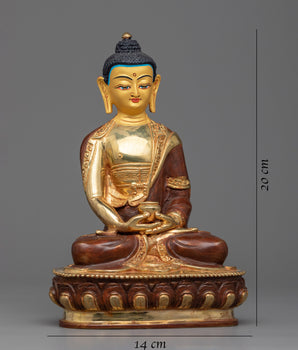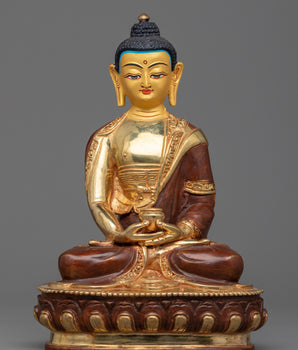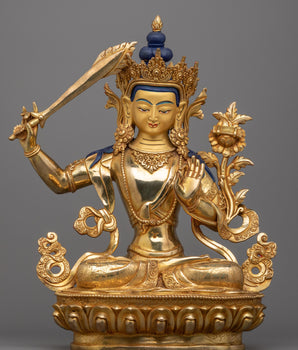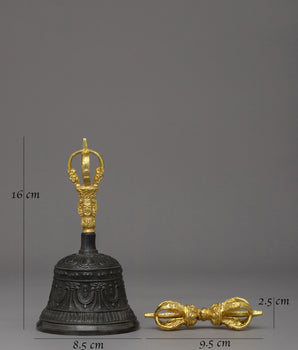









Hayagriva Wrathful Manifestation of Chenrezig | The Embodiment of All The Buddha’s Compassion

100% AUTHENTIC

HANDMADE

FREE SHIPPING
Hayagriva Wrathful Manifestation of Chenrezig Figurine in Yab YumRepresenting the Union of Compassion with Wisdom
----------------------------------------------------
Size: 5.1”/13cm (Height) x 3.9”/10cm (Base)
Weight: 0.45 kg
Material: Gold & Acrylic Paintings, Oxidized Copper Body, Silver-plated
----------------------------------------------------
About Our Statue:
The Hayagriva Wrathful Manifestation of Chenrezig Figurine is a representation of fierce compassion, symbolizing Avalokiteshvara's protective and transformational qualities. This tiny yet mighty statue, measuring 5.1"/13cm (Height) by 3.9"/10cm (Base) and weighing 0.45 kg, is ideal for personal shrines, meditation areas, or as a travel-friendly sacred item. This statue is composed of oxidized copper, gracefully silver-plated, and decorated with elaborate gold and acrylic paints.
Here, in the statue, the deity is depicted standing on a lotus throne with three faces, six hands, and four legs. He holds his consort, Vajravarahi, in a passionate embrace. This union signifies the ideal harmony between knowledge and sympathy. They also possess skull bowls overflowing with the blood of the four maras, representing their enlightened knowledge and triumph over death's powers. The five aggregates are purified by their human skull-adorned crowns, while Krodishvari's lengthy chain purifies the inner winds of skulls. It took us months of hard work to complete the statue, making it perfect for decoration.
In Tibetan Buddhism, Lord Hayagriva is a wrathful form of Avalokitesvara. It is said that there are 108 different varieties of Hayagriva. Avalokitesvara, a Bodhisattva, is one of the most well-known deities in the Mahayana pantheon of Buddhism. In the Mahāvirocana sūtra, Hayagrīva is described as a Vidyaraja who is situated next to the figure of Avalokitesvara in the depiction of the vast Magic circle or Mandala. Additionally, according to renowned Buddhist missionary Bodhiruci, Vidyaraja Hayagriva was associated with Amoghapasa as a unique element of Avalokitesvara.
Introduction To Hayagriva :
The furious, wrathful horse-faced deity Hayagriva can expel unconverted evil entities. The Mahayana and Vajrayana traditions have also recognized multiple deities as representations of numerous Buddhas and bodhisattvas.
In Tibetan Buddhism, Lord Hayagriva is a wrathful form of Avalokiteśvara. It is said that there are 108 different varieties of Hayagriva. Avalokitesvara, a Bodhisattva, is one of the most well-known deities in the Mahayana pantheon of Buddhism. In the Mahāvirocana sūtra, Hayagrīva is described as a Vidyaraja who is situated next to the figure of Avalokitesvara in the depiction of the vast Magic circle or Mandala. Additionally, according to renowned Buddhist missionary Bodhiruci, Vidyaraja Hayagriva was associated with Amoghapasa as a unique element of Avalokitesvara.
How do you take care of your statues?
• Place them at room temperature, avoiding direct sunlight.
• Make sure that the area where your statue is placed is entirely free of moisture and dust.
• Place it at the highest place on your altar after being consecrated by a Lama/monks. The best practice is to keep them covered inside a glass cabinet.
• Do not use your bare hands or any objects with a rough surface to wipe the face. Directly touching objects with the bare hand can smudge the face, leaving scratches.




















